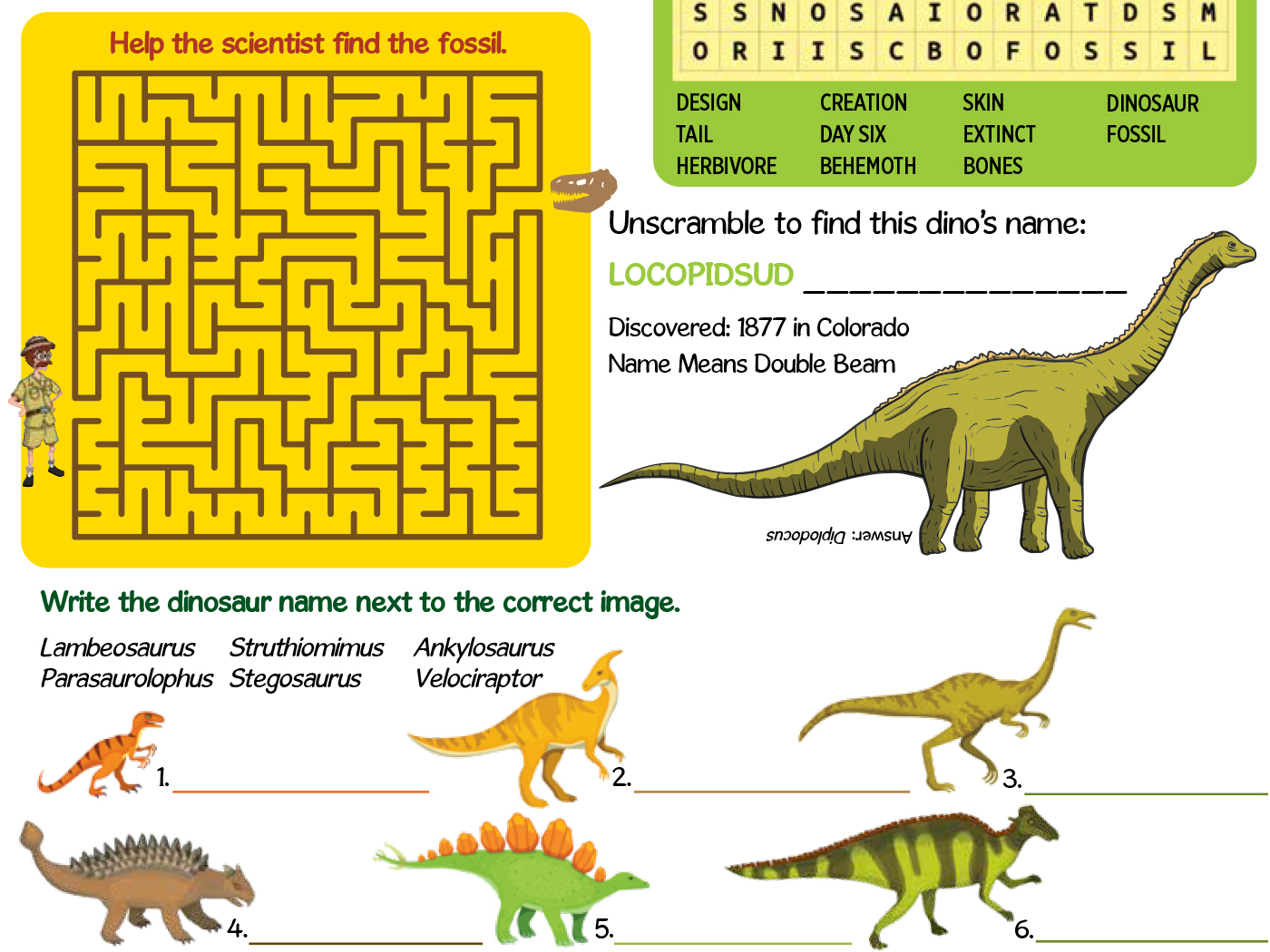For the past several years, the Institute for Creation Research has been seeking answers to the major questions of creation biology. This series’ previous installments chronicled the purpose and scope of ICR’s life sciences research.1 This month’s article lays out the promise our current studies hold.
Despite steady and encouraging headway, the extent of the remaining research questions is still vast. How, why, where, and when species originated, as well as why they go extinct, persist as unresolved young-earth creation questions. Nevertheless, our recent results bode well for the prospect of discovering answers in the foreseeable future.
The question of when species originated is, perhaps, the most promising area of our current research. Past ICR research has already undermined the typical evolutionary answers to this question. In the RATE project, ICR scientists and their colleagues uncovered fatal flaws in the evolutionary methodology by which fossil layers are dated. Not only did these scientists remove this common objection to the young-earth timescale, they also found compelling evidence for an entirely new way of understanding radiometric data.2
Additional research in creationist paleontology and geology has revealed powerful evidence for the Flood and against Darwin’s ideas. The majority of fossils are aquatic creatures, yet nearly all fossils are found on land—as if the land were once under water.3 In addition, the geologic layers in which these fossils reside span entire continents, indicating at least a continent-wide catastrophe as the cause.4 Finally, numerous examples of soft tissue in the fossils demonstrate that they could not have been buried millions of years ago.5 The Flood is the best explanation for much of the fossil record.
This fact makes the answer to the question of when species originated all the more challenging. Since the Flood spans only about a single year rather than the entire ~6,000 years of Earth’s history, the fossil record is a poor timekeeper of species’ origins post-creation and post-Flood—it’s a snapshot frozen in time.
This dearth of temporal evidence has spawned creative hypotheses on the timing of speciation. For example, some creationist researchers have suggested that species formed rapidly immediately after the Flood.6 Under this model, the burst of speciation quickly tapered off to the nearly invisible rate of speciation that appears to be the rule today. However, without a comprehensive dataset by which to test this model, other hypotheses are also worth considering. Speciation may have occurred in episodes—perhaps not in a single burst but in several bursts post-Flood. Alternatively, species may have formed at a constant rate in the ~4,350 years since the Flood.
The molecular clock that we highlighted in the last installment (part 6 in this series) may be a critical tool by which we can answer this question. If the rate at which certain DNA regions accumulated mistakes has been constant with time, then DNA differences act like a clock that ticks off the passage of time. By counting the number of DNA differences among species within a single kind, we might be able to chart when each of the modern species within a kind first originated. If this method works, it would open up all sorts of possibilities for future research. Stay tuned!
Click here to read the previous articles in this series.
References
- The previous articles in this series were published in the October 2014 to March 2015 issues of Acts & Facts.
- Vardiman, L., A. A. Snelling, and E. F. Chaffin, eds. 2005. Radioisotopes and the Age of the Earth: Results of a Young-Earth Creationist Research Initiative. El Cajon, CA: Institute for Creation Research and Chino Valley, AZ: Creation Research Society. See also Dr. Vernon Cupps’ recent series on radioactive dating in the October 2014 to June 2015 issues of Acts & Facts.
- Morris, J. D. and F. J. Sherwin. 2010. The Fossil Record: Unearthing Nature’s History of Life. Dallas, TX: Institute for Creation Research.
- Morris, J. D. 2012. The Global Flood: Unlocking Earth’s Geologic History. Dallas, TX: Institute for Creation Research.
- Thomas, B. Published Reports of Original Soft Tissue Fossils. Posted on icr.org/soft-tissue-list July 21, 2011, accessed March 26, 2015.
- Wood, T. C. 2013. A Review of the Last Decade of Creation Biology Research on Natural History, 2003-2012. In Proceedings of the Seventh International Conference on Creationism. Horstemeyer, M. ed. Pittsburgh, PA: Creation Science Fellowship.
* Dr. Jeanson received his Ph.D. in cell and developmental biology from Harvard University.

















